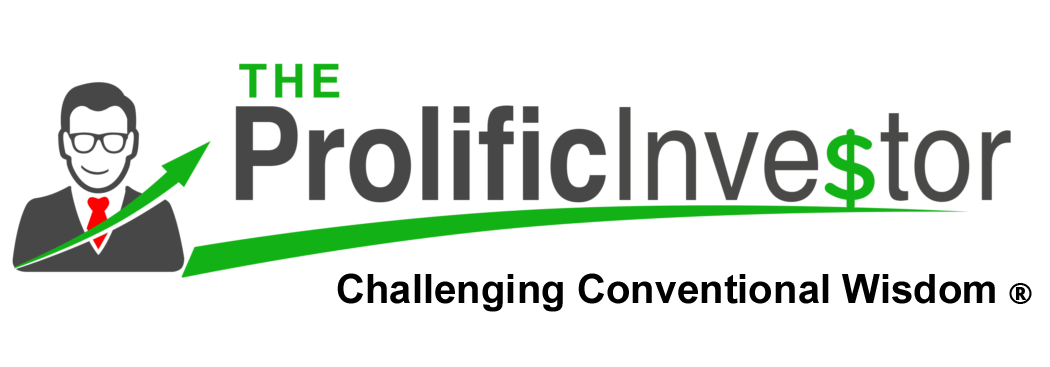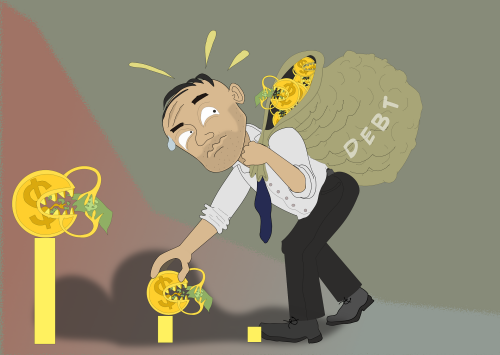Today’s topic is Why You Can’t Become Rich Without Debt. But first, why do we invest? We invest so that someday, work is a choice instead of a necessity. And when we reach that point, whatever we choose to do revolves around what fulfills us and makes us happy instead of what produces the most income. In order to get to this destination; however, we have to acquire and grow assets, so they can produce the income to support our lifestyle. But before our assets actually grow, they have to outpace two significant obstacles – inflation and taxes. If our assets don’t outpace inflation and taxes, the dollars they produce won’t maintain their buying power. In other words, when we get to that magical place where we don’t have to work anymore, we find that we can’t maintain the lifestyle we had when we were working because our dollars won’t buy the same amount of stuff.
So, here’s an interesting question; what’s the required annual return on our investments (ROI) just to just keep pace with inflation and taxes? If we’re all striving to retire someday, shouldn’t we all know the answer to this question? Buried deep within the code of Quicken Financial Planner is a formula called the break-even rate (sometimes called the break-even return or ratio). Using this formula, if the real inflation rate is 6% and the combined effect of federal and state taxes is 40%, every investment in your portfolio needs to achieve a 10% ROI every year just so your money keeps pace with inflation and taxes. If your investments aren’t performing to this level, you are losing financial ground! Some of you are going to ask, “Chris, why did you use 6% inflation when the government says it’s around 3%?” Simple, the government is lying!
The variables in the break-even rate formula are:
- Investment Performance
• Federal and State Taxes
• Inflation
Investment Performance
At first glance, one might say the only variable we can control is investment performance. Typically, that’s exactly what investors do; they chase higher performance, also known as yield or ROI. This chasing of yield usually results in riskier investments, which often work against the investor and actually produce lower yields or losses, just the opposite of what was intended.
Federal and State Taxes
As far as taxes go, the sophisticated investor can reduce or even eliminate taxes, but that’s beyond the scope of this article. So, let’s assume for now we can’t do much about taxes.
Inflation
Now we’re just left with inflation. There’s nothing we can do about that, right? Well, we can’t control it, but we can pass a portion of it on to someone else! If you purchased a home with a fixed-rate loan, you passed a whole bunch of inflation risk on to the bank. If your house cost $100K, and you put $20K down, the bank loaned you $80K in today’s dollars and will receive it back over the next 30 years in dollars that are declining in value each and every year. This is a great deal for you! Thank bank is now carrying the inflation risk on $80K.
In the prior example with inflation at 6% and Federal and State taxes totaling 40%, our investments needed to earn 10% just to keep pace with inflation and taxes. If when we invest, instead of investing with 100% of our money, we invest 20% of our money and borrow the remaining 80% (just like when we bought our home), the break-even rate goes from 10% to 2%! This means our investments only have to earn 2% to keep pace with inflation and taxes! And you did all this without taking on any additional risk (provided you got the right amount and type of debt to match the asset). You see, the inflation rate in the formula only affects the cash you invest, not money you borrow at a fixed interest rate to invest. This is why you can’t become rich without debt. In fact, you barely break even without debt.
There are some very popular and successful people out there telling you that you need to get out of debt, but they’re only telling you part of the story. The rest of the story is that there is good debt and bad debt. Bad debt can lead you to financial ruin, and good debt can make you rich. If you’ve racked up a bunch of credit card and other consumer debt buying crap, you need to pay off that debt. But once you’ve done that, you need to use good debt to buy assets. That good debt will at a minimum, preserve your lifestyle in retirement, and if you desire to be rich or build generational wealth, good debt is the only way to get there.
Finally, I have to give credit where credit is due. Everything I know about this topic came from a man named George Antone. George is a financial speaker, author, educator and all-around great and funny guy. He’s one of the smartest guys I’ve ever had the pleasure of meeting and spending time with.
Resources
If you want to pursue this topic further, I suggest you check out the following resources:
- Hacking Finance: A New Paradigm For Building Wealth by George Antone.
- The Debt Millionaire: Most People Will Never Build Real Wealth. Now You Can Be One Of The Few Who Do by George Antone.
- The above books are available on Amazon; and while I highly recommend them, there’s nothing like taking George’s classes live or online. Fynanc is George’s company where you can learn about and sign up for his online and live classes.


Thanks again for another great piece of information. I never thought of decreasing the break even rate by having the bank take on the majority of the inflation risk! Look forward to reading the rest of your blogs. I’m learning a lot!
Thanks for your comments Spencer. Yes, it’s one tiny change to the formula to take into consideration how much of the bank’s money is going into the deal, at a long term, fixed rate. It changes things completely. Now you can significantly lower the break-even rate without taking on additional risk. This assumes you have paired the right type of debt with the right asset and have reserves. You should get George Antone’s book “Hacking Finance: A New Paradigm for Building Wealth.” It’s less than 50 pages, and George is great at keeping these topics simple and understandable.
What about the interest you pay on the loan? Where is that figured in?
Cory, thanks for your question! In this article, I’m discussing using debt to purchase investments instead of only using just your cash and how inflation works in your favor when you take on fixed-interest-rate debt. I call this good debt. If you’re using debt to buy an income-producing asset like a rental property or an automated teller machine (ATM), that property or ATM will make the loan payments and produce additional free cash (if you got the right amount and type of loan to match that asset). And if you secured a fixed-interest-rate loan, your asset is paying off the loan over time with dollars that are decreasing in value due to inflation. So, inflation is actually paying off some of your debt. Hope this helps.